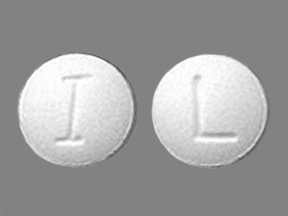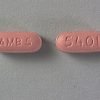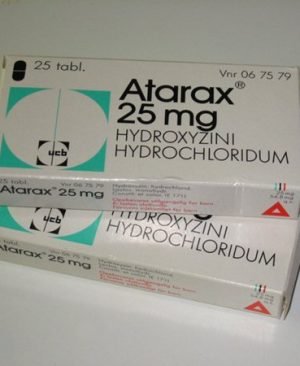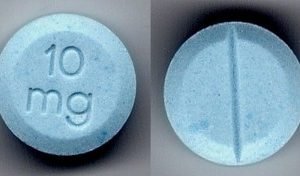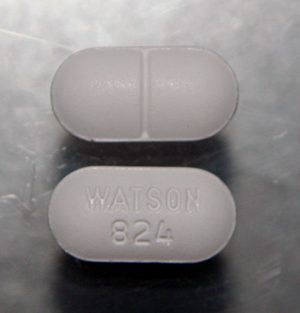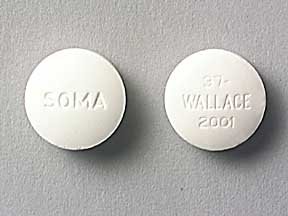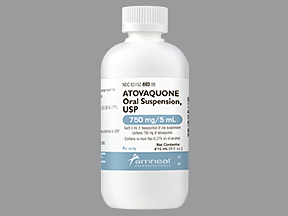Lorazepam (Ativan)
$4.00 $2.00
PRICE/TABLET
Brand Name: Ativan
Generic Name: lorazepam
Drug Class: Anticonvulsants, Other; Antianxiety Agents; Anxiolytics, Benzodiazepines
WHAT IS LORAZEPAM (ATIVAN) AND HOW DOES IT WORK?
Lorazepam is a prescription medical treatment used to manage anxiety. Lorazepam belongs to a class of drugs known as benzodiazepines which act on the brain and nerves (central nervous system) to produce a calming effect that relieve symptoms of anxiety. This drug works by enhancing the effects of a certain natural chemical in the body (GABA). This medication may also be used as a treatment for short-term insomnia. Insomnia is a medical condition that involves poor sleep quality and/or quantity of sleep during a period of time.
Lorazepam is not a narcotic, but may produce narcotic effects. It may have adverse reactions when taken while using antihistamine medications.
This medication must be prescribed by a doctor and is available by prescription only.
This medication is available as an oral drug or by injection.
Your doctor or healthcare provider should advise you that while taking this drug or other benzodiazepines, you should not consume alcohol.
Side effects and symptoms that are most commonly associated with this medicine are drowsiness and lightheadedness.
Read the drug information leaflet that accompanies the prescription as well as every time the prescription is refilled. There may be new health information.
Patients taking this drug should alert their doctors about any problems from the use of this medication and any troublesome side effects.
Lorazepam is available under the following different brand names: Ativan.
DOSAGES CONSIDERATIOINS – SHOULD BE GIVEN AS FOLLOWS:
Anxiety Disorders
- Initial: 2-3 mg oral tablet once every 8-12 hours as needed; not to exceed 10 mg/day
- Maintenance: 2-6 mg/day taken orally divided once every 8-12 hours
- Geriatric: Lower initial dose recommended; 1-2 mg orally divided once every 8-12 hours
Short-Term Treatment of Insomnia
- 2-4 mg taken orally at bedtime
- Geriatric: Lower initial dose recommended; 0.5-1 mg orally at bedtime, increase as needed. To avoid over-sedation, initial daily dose should not exceed 2 mg
Preoperative Sedation, Anxiety Relief, & Anterograde Amnesia
- 0.05 mg/kg intramuscularly (IM) for 1 dose; 2 hours before surgery; not to exceed 4 mg (2 mg in elderly), OR
- 0.044 mg/kg intravenously (IV) for 1 dose; 15-20 minutes before surgery; not to exceed 4 mg (2 mg in elderly)
Status Epilepticus – Adult
- Usual 4 mg/dose slow IV at 2 mg/min
- If seizure persists after 5-10 min, administer 4 mg IV again
Status Epilepticus (Off-label) – Pediatric
- Infants and children: 0.05-0.1 mg/kg IV over 2-5 minutes; not to exceed 4 mg/dose; may repeat every 10-15 minutes as needed
- Alternatively, 0.1 mg/kg at slow IV rate not to exceed rate of 2 mg/minute; not to exceed dose of 4 mg
- Adolescents: 4 mg slow IV; if seizure persists after 10-15 minutes, administer 4 mg IV again
Anxiolytic/Sedation in ICU (Off-label)
- Intubated and mechanically ventilated patients
- 0.02-0.04 mg/kg IV
- 0.02-0.06 mg/kg intermittent IV once every 2-6 hours as needed, OR
- 0.01-0.1 mg/kg/hour continuous IV; not to exceed 10 mg/hour
Children: 0.05 mg/kg orally once every 4-8 hours; not to exceed 2 mg
Chemotherapy-Induced Nausea/Vomiting (Off-label)
- 0.5-2 mg orally or intravenously (IV) once every 6 hours; as needed thereafter
- Children 2 years and older: 0.025-0.05 mg/kg intravenously (IV) once every 6 hours as needed; not to exceed 2 mg
Chronic Insomnia (Off-label)
- 2-4 mg orally bedtime
Dosing Considerations
- Intravenously (IV): Monitor respirations every 5-15 minutes and before each repeated IV dose
- Geriatric: When higher dose indicated, increase evening dose before daytime doses
Dosing Modifications
- Renal impairment
- Orally: Adjustment not necessary
- IV/IM: Use with caution in mild-to-moderate impairment; not recommended in severe impairment or renal failure
- IV/IM (prolonged periods or high doses): Monitor; risk of propylene glycol toxicity
- Hepatic impairment
- Orally: No dose adjustment recommended in mild-to-moderate impairment; use with caution (may require lower dose) in severe impairment
- IV/IM: Use with caution in mild-to-moderate impairment; not recommended in severe impairment of hepatic failure


